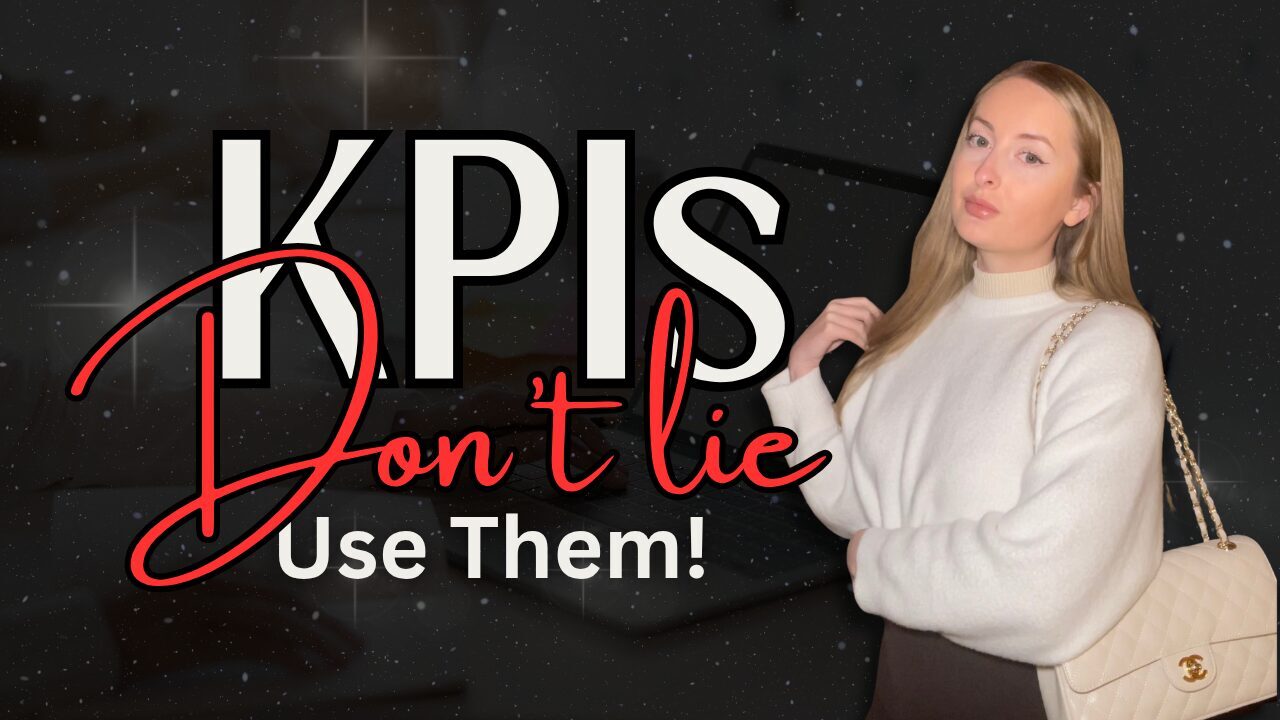If I gave you £10 and every time you did this, I returned £30. How much money would you give me? You would probably give me as many £10 notes as you have. You are essentially buying money at a discounted rate. Business owners do this every single day. The difference between them and you is, they know how to interpret their numbers. In this article, you will learn your marketing KPIs so that you can work backwards from your revenue goal as a brand.
Don’t use Instagram boosts if sales are your goal:
The biggest paid marketing mistake most brands make when running their first campaigns is… Most brands think running ads is just throwing ads at Facebook and Instagram and boosting their best-performing post. If you want to maximise your sales, this isn’t the best approach. It may get you more views and likes, but we want sales. We need to be strategic, otherwise we are gambling our revenue.
Stop dodging marketing maths, you need your KPIs:
A good marketing campaign requires maths. We need numbers to track our progress. If this sounds intimidating right now, by the end of the article, you will have everything you need to reach your next income level using ads. I will explain each marketing KPI in a beginner-friendly way – Let’s get into it…
AOV: Average Order Value
This is the baseline; without it, we can’t assess our other metrics. The average order value is easy to calculate. We find the average order value across a set period. Let’s look at an example:
Let’s say your brand made £4,000 from 40 sales last month. Your AOV is £100. Divide your total sales by the number of orders.
It’s important because if your AOV is £10, you can’t spend £20 to acquire a customer; you’d lose money on every sale. But if your AOV is £100 and you spend £20 to get a customer, you’ve in theory got £80 to play with.
How to boost your AOV? Use upsells, cross-sells, or bundles. Even a small bump, like adding a £10 upsell, can save your wallet.
Profit Per Sale (Spoiler: Revenue Is Not Profit)
My pet peeve is seeing “online course sellers” sharing screenshots of their revenue. High revenue means nothing if your expenses surpass it. Revenue looks compelling on screenshots. Profit? That’s what pays your bills.
Subtract product costs, shipping, payment fees (Stripe, PayPal), returns, refunds, and even customer service expenses from your AOV to find your real profit per sale.
For example, let’s say your metrics are as follows:
AOV is £30
Product manufacturing cost: £8
Shipping & packaging: £3
Payment fees: £0.90
After taking away the fulfilment fees, you are left with £18.10. This seems like an ideal calculation, but some brands do not take into account their returns and refunds. Let’s say 5% of your customers are unhappy and return the product for a refund. A 5% return rate means your £18.10 profit drops to £16.20
Customer Acquisition Cost (CAC)
If you don’t know how much it costs to acquire one customer, how can you forecast your growth? Customer acquisition cost is how much money it costs to get a customer. When dealing with ads, here’s exactly what to do.
Simple calculation: Total ad spend ÷ Number of customers acquired = CAC.
Example:
Spend £1,000, get 100 customers = £10 CAC.
If CAC > profit per sale, you’re losing money. Stop this immediately.
Return on Ad Spend (ROAS)
ROAS tells you how much revenue you get for every £1 spent on ads. If you spend £1 and get £3 back, your ROAS is 3:1.
What’s a “good” ROAS? It depends on your profit margin:
50% margin → need at least 2:1 ROAS to break even
20% margin → need at least 5:1 ROAS to break even (ouch)
How to Use These Metrics to Reverse Engineer Your Sales Goals
Got a target? Say you want £15,000 in sales next month. Your AOV is £30, CAC is £12.
Sales needed: £15,000 ÷ £30 = 500 sales (Goal/AOV=Sales Target)
Ad spend needed: 500 × £12 = £6,000 (Sales Target x Cost Per Customer = Ad Spend)
ROAS: £15,000 ÷ £6,000 = 2.5:1 (Target/Ad spend = ROAS)
Your forecasted ROAS will tell you if your ad strategy is worthwhile. As the campaign runs, keep track of your numbers for more accuracy.
Mistakes Keeping Ad Spend High:
Running ads that push products straight at cold audiences? Outdated and ineffective. Cold audiences don’t know you. They won’t buy based on your product photo or price tag alone.
Instead, build funnels with:
- User-generated content (social proof)
- Lead magnets (freebies that build your email list)
- Email nurturing sequences (build trust, add value)
- Retargeting ads (warm audiences ready to buy)
The funnel warms leads from “Who is this?” to loyal customers.
Daily Ad Management: Test, Optimise, Cut, Scale
Ads aren’t “set and forget.” They need daily attention.
-
- Test creatives (videos, images, text)
-
- Try different audiences and interests
-
- Track key metrics (CTR, CAC, ROAS)
-
- Pause what doesn’t work, scale what does
-
- Small tweaks and A/B tests can slash your costs and boost profits massively.
Your Action Plan: Numbers, Funnels, and Goal Setting:
-
- Calculate your Average Order Value
- Calculate your Profit per Sale
- Calculate your Customer Acquisition Cost
- Calculate your Return on Ad Spend
- Reverse engineer your revenue goals into ad budget
- Build and run a sales funnel (with killer content and lead magnets
- Test, optimise, and tweak daily, no lazy money throwing


No responses yet